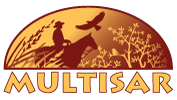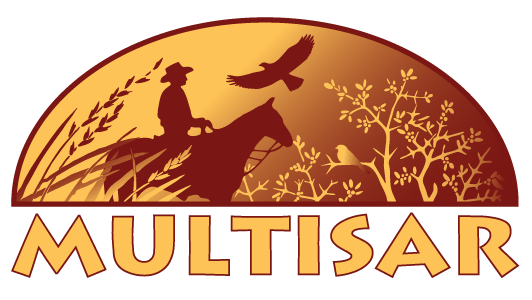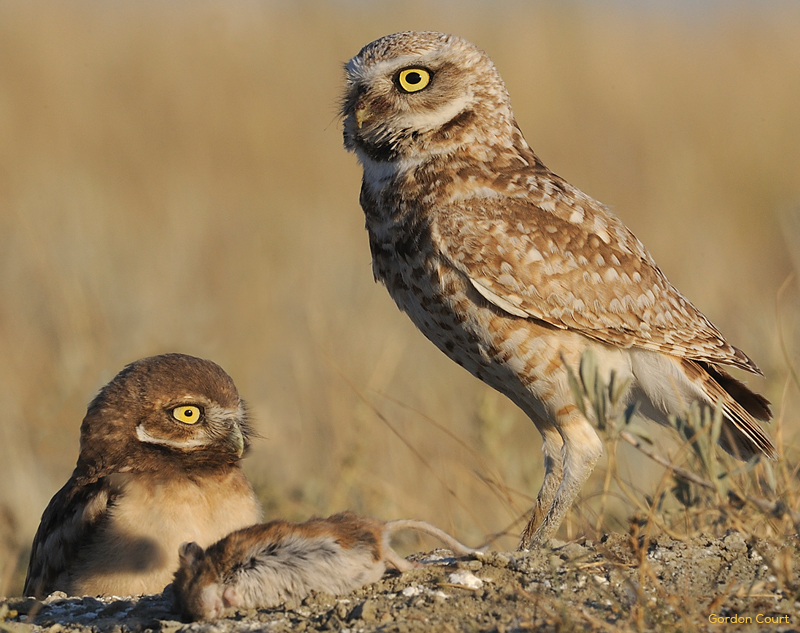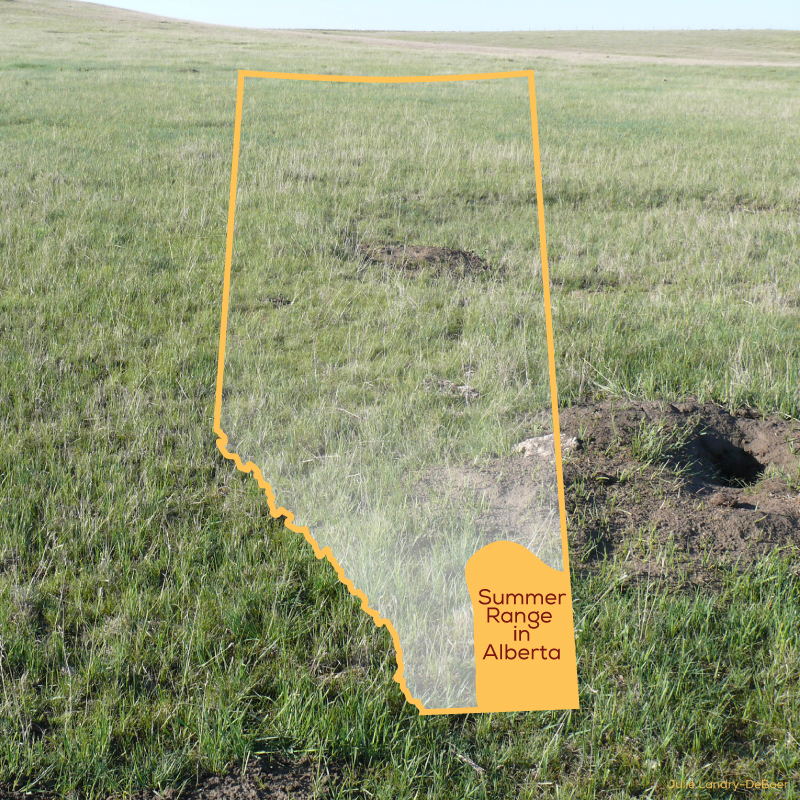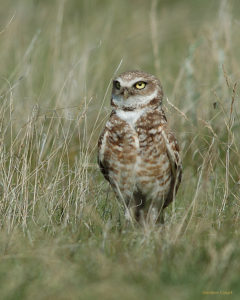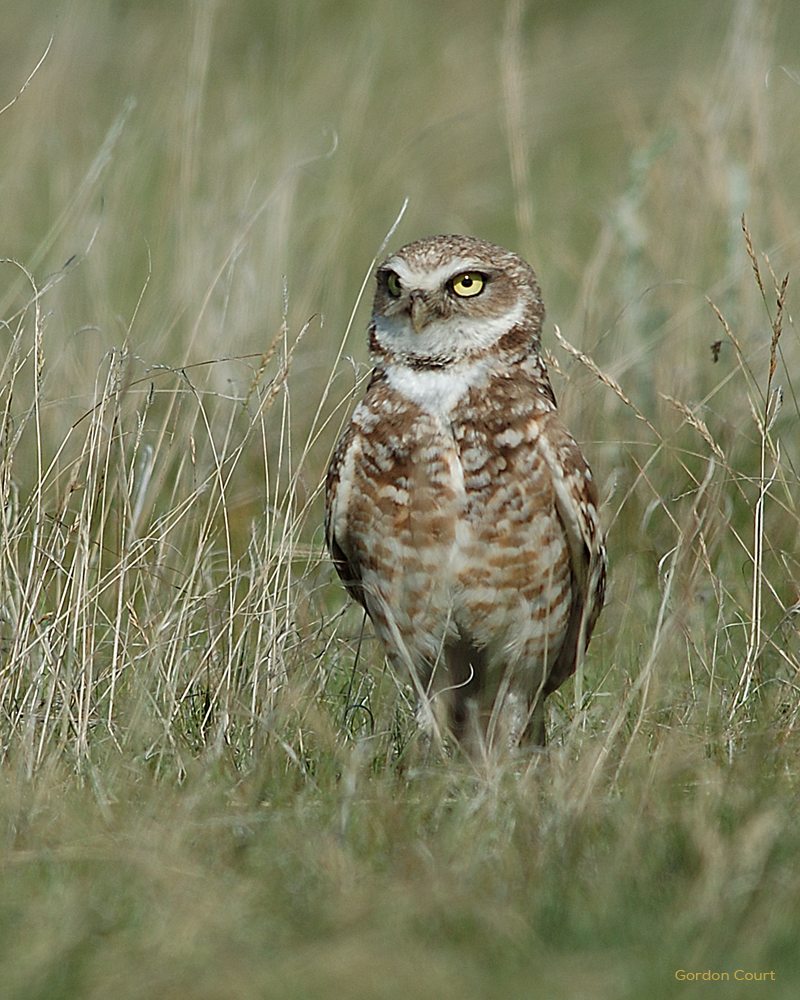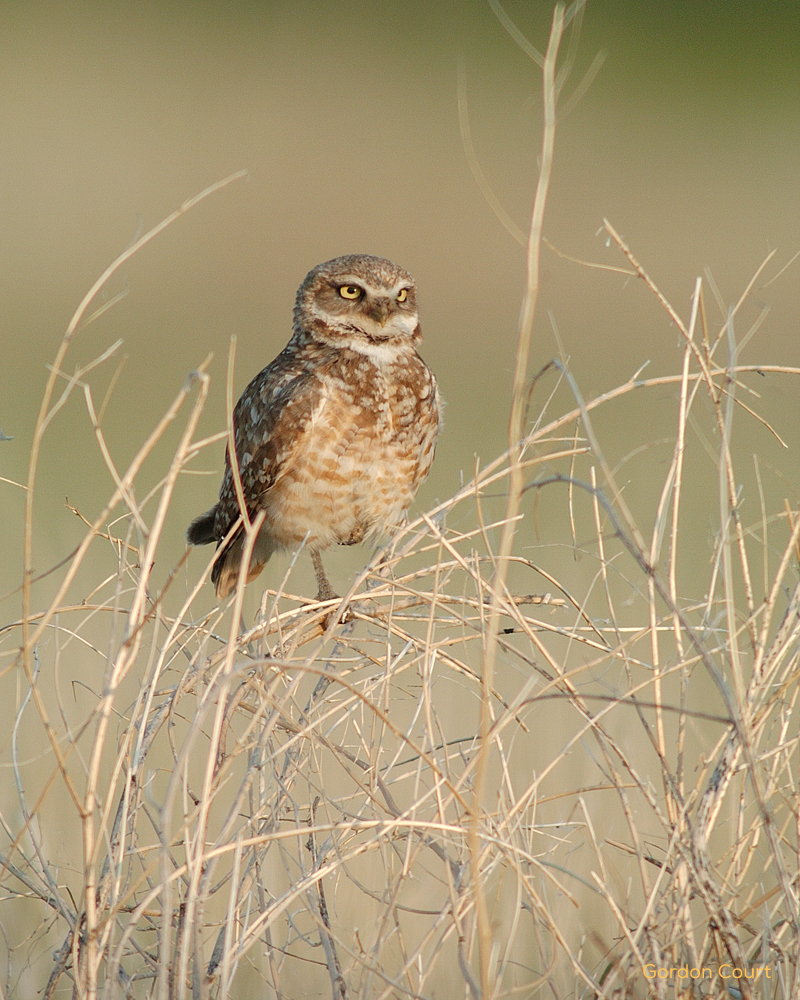Burrowing Owl
Athene cunicularia
Habitat:
Open and flat native grasslands on loose soil that accommodates burrowing. Relatively tall grass is preferred for foraging, while shorter grass is favoured for nesting.
Borrowing Burrows
While they nest in underground burrows, Burrowing Owls do not dig their own, rather they modify existing burrows created by ground squirrels or badgers. Burrows are used for nesting, roosting and escaping from above-ground predators.
Imitation Game
When faced with a predator, young Burrowing Owls disappear into their burrow and make a hissing noise that sounds like a rattlesnake’s tail. This is an effective way to keep predators at bay. Above ground predators include coyotes, foxes, hawks and other species of owl. Skunks, badgers, snakes and weasels prey on incubating adults, eggs and young.
Like Night and Day
Burrowing Owls have bipolar habits. During the day, they hang out near their nest, snacking on grasshoppers and other insects. At night they fly to areas with taller vegetation to hunt small mammals. They require patchy grasslands to fulfill both of these requirements.
Who Dung It?
While it has long been known that Burrowing Owls line their nesting burrows with dung, recent research has shown that they do this to attract dung beetles, which they then eat.
Population
The Burrowing Owl’s range has contracted dramatically in Alberta in the last 40 – 50 years. Long-term monitoring programs show a continued decrease in numbers since the early 1990s until the present day. In 2005 the population was estimated at between 200 and 400 pairs. This decline was caused by a combination of factors, with the loss and fragmentation of native grasslands being the primary reason.
Current Threats
- Loss and fragmentation of native grassland habitats from urban development and agricultural expansion. Fragmentation of native grasslands has been shown to affect the survival of juvenile Burrowing Owls. Prey populations and burrow densities are lower in agricultural habitats.
- Collisions with vehicles and fences.
- Increases in predators and predator effectiveness as a result of habitat changes and degradation. For example, human-created features, such as fences, utility poles and shelterbelts create perches for predators to hunt from.
- Control of burrowing animals, particularly ground squirrels and badgers, reduces the availability of burrows.
- Pesticide use, which lowers productivity both directly and by affecting the owl’s prey populations.
- Mortality during migration and while on their wintering grounds.
- Extended periods of rain can be fatal to young owls and can cause complete nest failure. Changes in climate resulting in increased frequency and intensity of rain events is contributing to the population decline.
Species@Risk Quiz
Test your knowledge about Alberta’s grassland species at risk
Burrowing Owl
Question 1 |
Burrowing Owls feed on:
Mice and voles at night; insects during the day
| |
Insects at night; mice and voles during the day | |
Seeds and grass at night; dung during the day | |
Question 2 |
Burrowing Owls nest in burrows that:
They dug themselves with their long legs and sharp claws
| |
Were dug by badgers and grounds squirrels | |
Were formed by huge flood events on the prairies |
Question 3 |
Burrowing Owls line their nests with dung because:
It smells nice
| |
It attracts dung beetles | |
It keeps predators away |
Question 4 |
Alberta’s Burrowing Owls spend their winters in:
Southern Texas and central Mexico
| |
Southern Alberta | |
Hawaii |
Public
- Report Burrowing Owl nests and observations to MULTISAR or to your local Alberta Environment and Parks biologist.
- Drive carefully when you are in Burrowing Owl habitat, especially at night when they might be hunting along roadside ditches.
- Support native grassland habitat by choosing grass-fed meat in the grocery store.
- Voice your support for native grassland conservation with your political leaders.
- Educate yourself and your family about Burrowing Owls and their role in the grassland ecosystem.
Landowners
- Report Burrowing Owl nests and observations to MULTISAR or to your local Environment and Parks biologist.
- Protect active and historical Burrowing Owl nesting sites and keep human disturbance at least 500 m away from nest sites.
- Allow grazing within 100 m of burrow to keep grass height below 10 cm.
- Encourage a range of grass heights and litter cover in your pastures.
- Minimize cross-fencing to reduce perches for predators of Burrowing Owls.
- Avoid pesticide use near Burrowing Owl nests and foraging areas.
- Drive carefully when you are in Burrowing Owl habitat, especially at night when they might be hunting around roadside ditches.
- Consider restoring some of your degraded grasslands or marginal croplands to native vegetation typical of your area.
- Contact MULTISAR to discuss management practices that might be beneficial to Burrowing Owls on your property, including restoration projects.
- Talk to your children and neighbours about the privilege of having this unique animal on your land.
What MULTISAR Does
- Conducts surveys and monitors Burrowing Owls on cooperating ranches.
